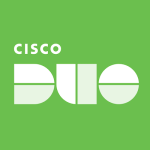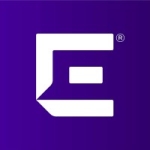We're just using it for authentication to our network switches.
We have more visibility and control with the tool. It has helped us improve our cybersecurity resilience.
The authentication piece was a big deal, especially because we're able to roll it out so quickly. Once we start using it to its full potential by using NAC, we can automate a lot of things that we're doing manually. MAC lockdown is one of the big things we have an issue with because I work on the classified network, so we're locking down every end device. It takes up a lot of time. That's one of the biggest things that we're rolling out. I'm not sure what other features we're going to use out of it, but I know that once we get started on it, we'll be a lot more involved with the things that we're going to roll out.
It's really easy in terms of the authentication piece. It's a big help. We've other parts of the network that are not using any authentication at all, which is scary. We've so many separate companies, and I'm hoping that we can start using this for those networks as well.
It has saved us time. We've control on our side, and we're able to add new devices as we deploy them for new buildings and things like that. We're able to give different types of access that our users need to have, which is nice. It has been huge, and then once we start deploying NAC or something like that, that's going to be a game changer for us because that'll free up a lot of time for us. It probably saves at least ten hours a week because especially right now, we're in the phase where we're getting so many new buildings. We're not only turning up new buildings; there are also all the users. So, for every single device, you have to do a MAC lockdown. Sometimes we get spreadsheets listing a ton of PCs that we've to lock down. That just takes forever, especially if you get it wrong or someone has fat fingers and things like that. It'll hopefully eliminate a lot of that too. We won't have the back and forth with other groups for that.
It has helped consolidate tools. We don't have to go outside our own group for the authentication piece. That control is a big deal. On top of that, once we start integrating NAC and other things, it's going to eliminate a lot of manual work.
Having access and being able to add people or change authentication yourself is nice. In the past, we've used other group authentication services, and we always had to go to them and get permissions. Having that control is key.
Adding new devices was a little cumbersome. I haven't done it that many times, but I remember that adding new devices to the authentication piece of it was a little cumbersome. The way I was shown to do it, I thought it was odd because we had to go into the active device, copy the file down, export it, make some changes to it, and then reimport it as opposed to being able to click it and having a template to fill out. It was a little more cumbersome than I thought.
I've been using Cisco ISE for about a year.
For the times that I have interacted with them, they've been pretty good, but I've heard of other stories. Overall, I'd rate them an eight out of ten.
We were using regular TACACS, RSA, etc. I can't remember what they were using on their side because it was more of the infrastructure team that was using this. We would just basically go to them and give them requests. Having control through Cisco ISE is much better.
The reasons for going for Cisco ISE were having that control and having a relationship with Cisco. All of our gears are Cisco. It just made it easier and more compatible. I know there are a lot of other tools that we can take advantage of such as NAC and things like that. We're hoping to do that in the future.
As far as I know, it was fairly easy. We didn't have a lot of problems with it. One of our other guys deployed it. I wasn't with him, but I didn't hear that there were a lot of problems with it, so it was fairly easy. The same guy had deployed it on the unclassified networks, so he had experience with it.
Overall, I'd rate Cisco ISE a seven out of ten.















